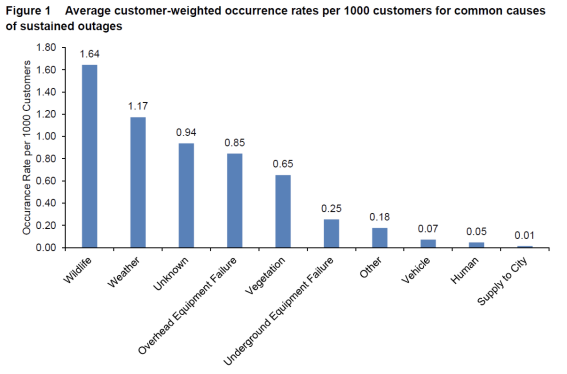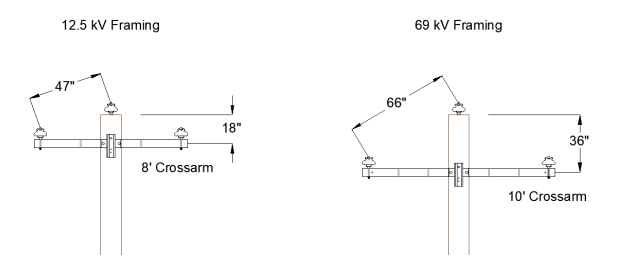PZM Solutions — Lowering High Breaker Ops
Protection Zone Management (PZM) software offers a unique program that not only simplifies your inspection program, but gives you valuable feedback to improve your electrical system.
PZM has created Alerts in our software to provide utilities information they can act on to improve their system. PZM Solutions are ideas we have that utilities can use to respond to alerts and make meaningful improvements to their system.
Feedback control theory illustrates you can't control anything without feedback and response. Management guru Peter Drucker says what gets measured, gets managed. PZM uses your inspections to provide the important feedback and measurements needed to control and manage your system. PZM Solutions are ideas for a response. Using this process, you will be able to stay in control of your operation.
PZM Breaker Ops Alert
PZM Breaker Ops Alert feature measures the impact of power interruptions on all of the inspected protection devices on your system. A high breaker ops score indicates an area on your system where power interruptions are causing a high impact to your customers.
Roughly 9 out of 10 electric utility outages are due to problems with the distribution system.
These outages are not just power interruptions—they interrupt business, schoolwork, healthcare, dinner, and a good movie. One unplanned power outage can cost an industrial customer tens of thousands of dollars in lost revenue. According to a recent Department of Energy study, power outages are costing the U.S. economy more than $150 billion annually.
Power restoration is costly for an electric utility. Unplanned repairs can be 7 times more expensive than planned repairs! The cause of an unplanned outage can be hard to find and troubleshoot, and they happen in the freezing rain, dumping snow, or the middle of the night. By the time repairs are completed, and power is restored, it is not uncommon that a full day of planned work is lost.
An electrical utilities business is delivering energy. Electrical energy is the product, and power interruptions stop the delivery of the product. A company with a deficiency that stops delivery of its product, costs both the company and its customers money. A continuous effort to improve electrical deficiencies must be a top priority for every utility.
PZM Solution — Give Me Some Space!
Many papers discuss sectionalizing, fuse placement, motorized switches, and recloser strategies to reduce power outage frequency or duration. Rather than reduce the impact of power interruptions, let's look at what I think is the most important strategy to reduce or eliminate power interruptions: Spacing.
The top 4 causes of power interruptions are caused by weather, wildlife, equipment failure, and vegetation on overhead distribution circuits, see figure 1 below:

Simply increasing the spacing between conductors can drastically improve 3 of 4 of these power interruptions. While existing standards meet minimum spacing standards, they simply do not provide enough spacing for rural distribution circuits where you often find long spans, inclement weather, birds and wildlife, and vegetation issues.
A simple test is to review the number of momentary and sustained outages on 69kV circuits compared to distribution voltages. A 69 kV circuit in the same environment usually has very few interruptions compared to distribution circuits. Sectionalizing, fuse placement, motorized switches, and recloser strategies are not what makes the difference; the spacing between conductors does. The difference in cost to increase spacing on distribution circuits is nominal. Often it is just lowering a crossarm and a neutral conductor. The more spacing, the better. We recommend upgrading to 10' arms or using 69kV framing and spacing standards on distribution circuits in rural areas. The increase in the cost of a 10' arm vs. an 8' arm is quickly paid off when you consider the reduction in unplanned truck rolls, overtime, and work interruptions over the life of the circuit.
If you have a high breaker ops score on your overhead distribution protective device, PZM recommends reframing your poles from a distribution voltage standard to a 69kV spacing standard and watch the breaker ops score drop. See below.
RUS Framing Standards — 12.5kV Framing vs. 69kV Framing

Reframing a tangent structure on a distribution line to a 69kV spacing standard will increase conductor spacing between phases by about 40%, from 47” to 66”.
PZM Solution Idea — Reduce Span Lengths
If you have to replace a pole on a powerline with high breaker operations—and with long spans—consider adding a pole. For example: If the pole you need to replace supports has a 400' span on each side, consider removing the pole and adding two equally spaced poles. This will turn (2) 400' spans into (3) 267' spans. Adding space and reducing span lengths will improve reliability.
PZM Solution Idea — Avian Framing Standards
In a high breaker ops zone, with bird nesting and perching activity—consider framing angle structures to an avian protection standard, even if it is not a regulation. This will increase spacing and add birdguarding to help eliminate interruptions caused by birds.
Additional Reading
About Protection Zone Management—PZM
Protection Zone Management (PZM) is a simple, comprehensive and leading-edge inspection and maintenance program designed to improve electric utility operations.
The PZM program delivers a mobile and web-based inspection experience that helps electrical utility co-ops bring their inspection programs into the 21st century.
Benefits of PZM include:
- Detailed, electrical industry specific inspection questions.
- Eliminates paper-based dual data collection.
- Instant deficiency identification and assessment.
- PZM syncs the information to the cloud where it can be accessed from your office, your home, or on the road.
- Instant access to all of your electric utility data.
PZM is an electrical utilities inspection software solution that puts your inspection and maintenance program on cruise control and frees up management time for other important business initiatives.